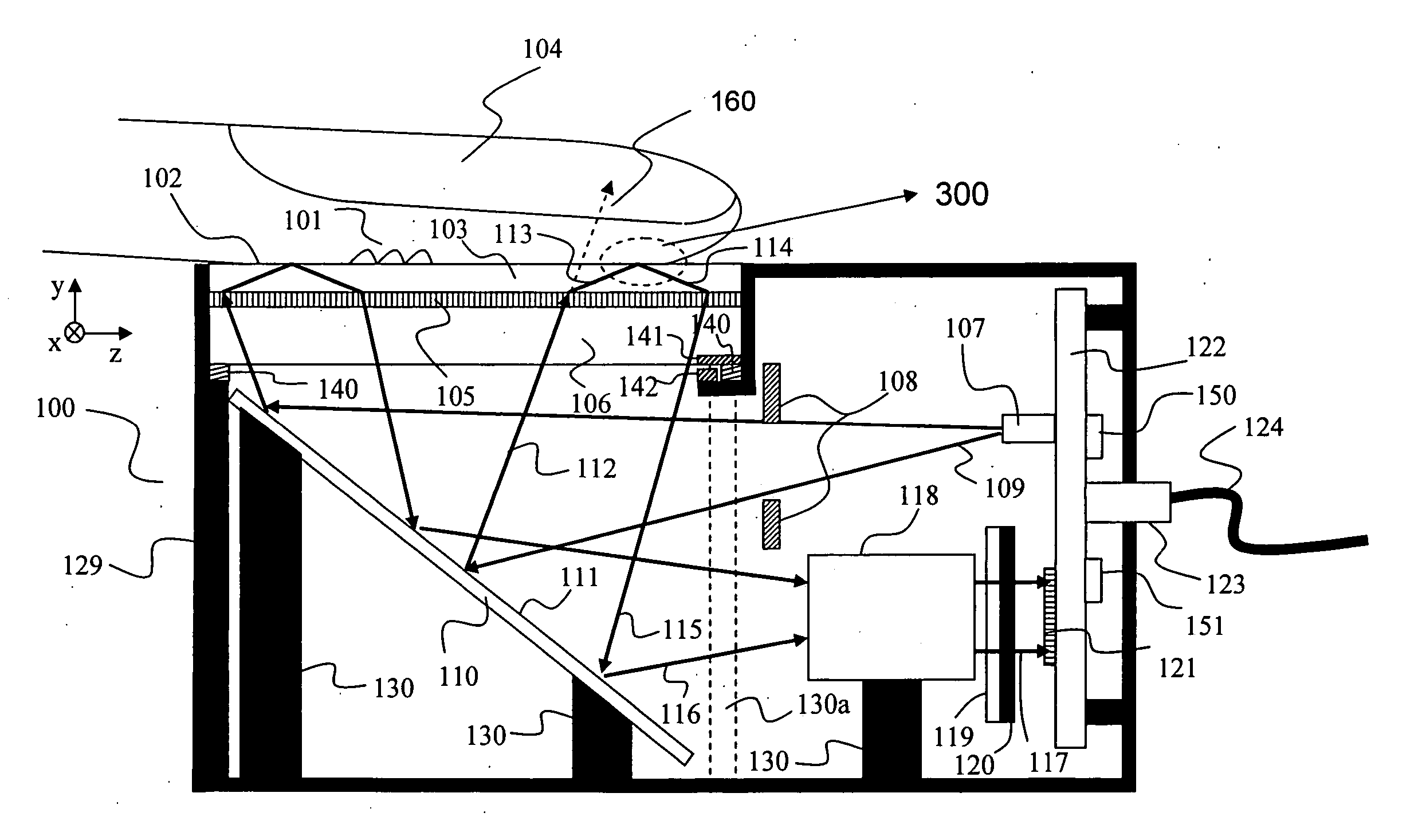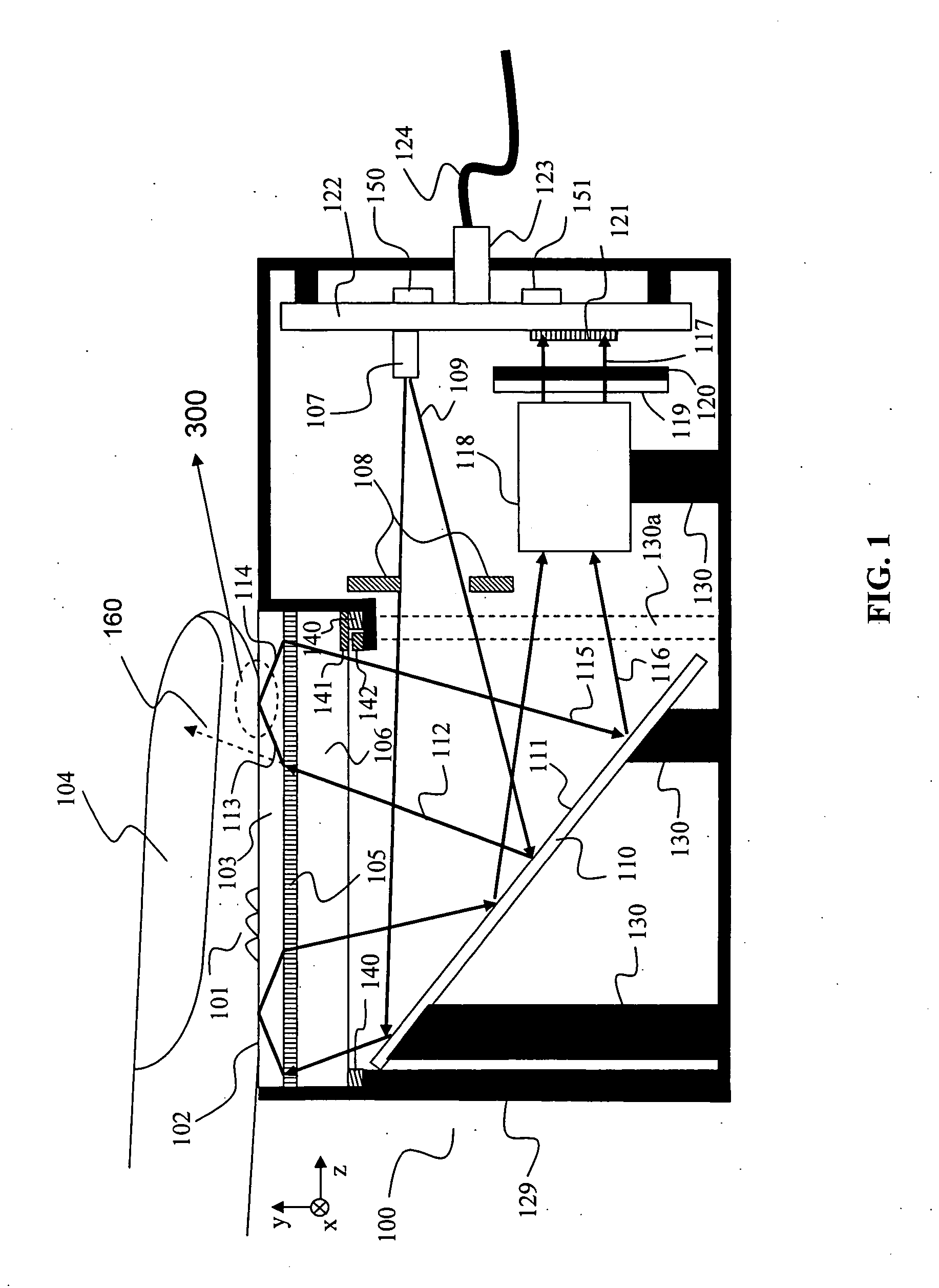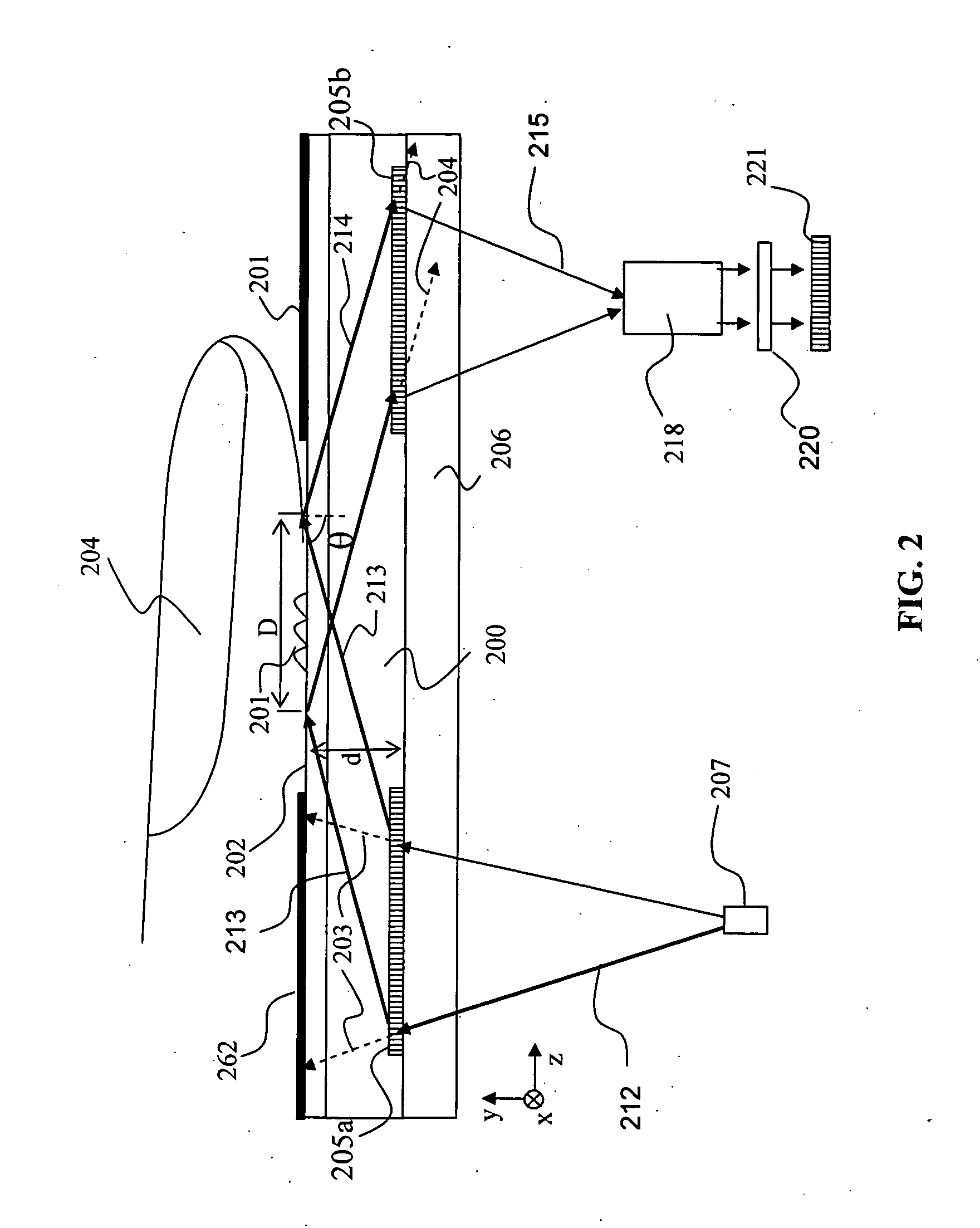Diffractive imaging system and method for the reading and analysis of skin topology
a diffractive imaging and topology technology, applied in the field of diffractive imaging system and method for reading and analysis of skin topology, can solve the problems of reducing the usefulness of real-life applications of optical designs for fingerprint images, many designs are not suitable, and most optical designs are proposed for fingerprint images
- Summary
- Abstract
- Description
- Claims
- Application Information
AI Technical Summary
Benefits of technology
Problems solved by technology
Method used
Image
Examples
example 1
Optical Imaging Performance of the Imaging Apparatus Depicted in FIG. 4
[0092]FIG. 6A and FIG. 6B illustrate the optical imaging performance of one embodiment of the imaging apparatus depicted in FIG. 4. In this embodiment, substrates 460, 462, 468 and 466 were modeled as BK7 glass with thicknesses of 1.6, 1.6, 1.6, and 0.6 mm, respectively. The device was designed to achieve 1200 ppi electronic resolution with the use of an Eastman Kodak (Rochester, N.Y.) CMOS chip KAC-9648 (1288×1032 array of 6×6 μm pixels). The custom imaging optics have the prescription as shown in Table 1.
TABLE 1Imaging Optics for Performance denoted by FIGS. 6A and 6B.Lens ElementMaterialParameters (mm)1LAK10R1 = 9.324R2 = −23.875T = 3.767Air gapAirT = 0.6352SF8R1 = −13.760R2 = 5.425T = 1.259Air gapAirT = 5.2063SK16R1 = −1555.9R2 = −8.637T = −8.637
[0093] The optical system was analyzed observing the performance of the system at field points with coordinates of 10.84 and 13.55, as these represents half of the ...
example 2
Optical Imaging Performance of the Imaging Apparatus Depicted in FIG. 4
[0094]FIG. 7A and FIG. 7B illustrate the optical imaging performance of one embodiment of the imaging apparatus depicted in FIG. 4. In this embodiment, by use of a custom set of imaging optic 418, the imaging apparatus is capable of passing AFIS Image Quality Specifications for 1000 ppi. The substrates 460, 462, 468 and 466 were modeled as per above for BK7 glass with thicknesses of 1.6, 1.6, 1.6, and 0.6 mm, respectively. The custom imaging optics have the prescription as shown in Table 2.
TABLE 2Imaging Optics for Performance denoted by FIGS. 7A and 7B.Lens ElementMaterialParameters (mm)1LAK10R1 = 9.265R2 = −18.779T = 3.767Air gapAirT = 0.6352SF8R1 = −11.523R2 = 5.649T = 1.259Air gapAirT = 5.2063SK16R1 = 1787.14 (cyl.)R2 = −8.916T = −4.709
[0095]FIG. 7A illustrates the distortion of the. The maximum distortion is 0.77% which slightly exceeds the AFIS Level 2 specification for a 1000 ppi fingerprint scanner that...
example 3
Fingerprints Taken with the Apparatus Depicted in FIG. 4
[0096] In FIG. 8A and FIG. 8B are images of fingerprints that were taken with the apparatus depicted in FIG. 4. FIG. 8A illustrates the fingerprint at 1200 ppi of a subject that was taken dry (i.e., no moisture added to the finger). The image captured is approximately 27.3×21.8 mm across. In FIG. 8B an image of the same finger was taken under the same conditions as the fingerprint in FIG. 8A with the exception that a saturated salt water solution was poured on skin contact surface 402. FIG. 8B illustrates the apparatus constructed as exemplification of embodiments of the present invention operates at a TIR angle that is higher than the TIR angle for float glass to salt water and in this manner fingerprints can still be taken of a substrate with sweaty hands and / or in a very humid environment.
PUM
 Login to View More
Login to View More Abstract
Description
Claims
Application Information
 Login to View More
Login to View More - R&D
- Intellectual Property
- Life Sciences
- Materials
- Tech Scout
- Unparalleled Data Quality
- Higher Quality Content
- 60% Fewer Hallucinations
Browse by: Latest US Patents, China's latest patents, Technical Efficacy Thesaurus, Application Domain, Technology Topic, Popular Technical Reports.
© 2025 PatSnap. All rights reserved.Legal|Privacy policy|Modern Slavery Act Transparency Statement|Sitemap|About US| Contact US: help@patsnap.com



